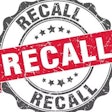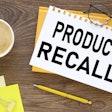The Association of American Feed Control Officials (AAFCO) held its annual meeting in Portland, Oregon, USA, July 31 through August 2, 2010. The Pet Food Committee (PFC) session generated many newsworthy items. Other news from the AAFCO meeting will appear in next month’s column.
The issue of calorie content statements provoked the liveliest discussion. The report of the Working Group for Weight Related Terms and Calories was previously accepted by PFC at the “mid-year” meeting last January, but time constraints limited discussion of the report itself. At this meeting, the floor was open to discussion of the report’s recommendations.
The recommendations included amendment to AAFCO Model Regulation PF9 (Statements of Calorie Content) that would require calorie content statements on all dog and cat food labels (with minor exceptions), not just “lite” or “less calorie” products as currently required. The amendments to PF9 would also stipulate declaration both in terms of kilocalories of metabolizable energy per kilogram and per common household unit (e.g., cups, cans, biscuits) and add language to the label statement when calories are determined by the digestibility trial method.
However, the report also recommended simplifying the requirement for data from which calories are determined by the calculation method and eliminated the need for the value declared in the calorie statement determined by a digestibility trial to be within 15% of the calculation method. So, while a broader range of products would be affected by the amended regulation, the capacity for both compliance by manufacturers and enforcement by feed control officials would be facilitated.
The report’s recommendations also included amendment of PF10 (Descriptive Terms) to specify requirements for labels bearing “weight management” and “weight control” claims. After extended debate, PFC voted in favor of the report’s recommendations in full.
PFC intends to discuss some nuances in the regulatory language at the next meeting, after which the proposed amendments are expected to move to the Model Bill & Regulations Committee to review them for consistency with current Model language. The proposed amendments would eventually need to be voted on by the board of directors and full AAFCO membership before enacted. After enactment, a sufficient grace period to allow for revision of affected labels is expected and reasonable.
A new AAFCO website designed to help small manufacturers understand and comply with labeling and other regulatory requirements was revealed at the meeting. It is intended to become a one-stop shop to help answer many of the questions from companies that often burden feed control officials. The demonstration of the new site received great applause from the audience.
AAFCO’s Small Manufacturing Working Group is still adding final touches, so the website is not accessible to the public at this time. It is likely to go online later this fall, after which more details will be provided in this column. A similarly constructed website to help address the questions of consumers is also in the works.
The three subgroups under the Nutrient Profiles and Feeding Protocols Expert Panel have completed their respective tasks in drafting recommendations for changes to dog and cat food nutritional adequacy requirements, it was reported. The panel as a whole has not finished with its internal review, however. The panel chair indicated the report will be brought forward to PFC by the mid-year meeting, ready or not.
There was no news regarding development of federal petfood regulations as mandated by the Food and Drug Administration Amendments Act of 2007. The act was in part an outcome of US Congressional hearings regarding the melamine-related recalls earlier that year.
The Feed Labeling Committee accepted new proposed regulations to allow for claims relating to dietary starch, sugars and fructans content on animal feed labeling at the last mid-year meeting. However, the proposed amendment that is moving forward expressly exempts petfoods.
While recommendations for similar claims on
petfood labels were also developed, there was no consensus, so the matter has
been forwarded to PFC for further deliberation. To that end, a new working
group under PFC has been formed to deliberate on possible carbohydrate-related
claims on petfood labels.

















